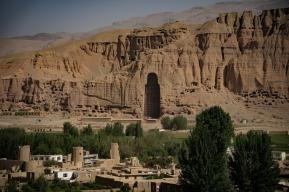News
A new National Museum in Rio de Janeiro rises from the ashes

The restoration and rebuilding of the Paço de São Cristóvão aims to integrate the museum into the surrounding community
Following the devastating fire that ravaged the National Museum in Rio de Janeiro in 2018, destroying much of the palace interior and its precious collection, UNESCO, through its office in Brasilia, has been working on the ground to support its restoration.
UNESCO and the Museu Nacional Vive Project have chosen the consortium H+F Arquitetos e Atelier de Arquitetura e Desenho Urbano for the architectural design and restoration of the new museum, following a bidding and selection process involving renowned specialists in architecture, cultural heritage, engineering, and museology.
The initiative aims to return a fully recovered, internationally and culturally significant museum to the community, in line with UNESCO’s Recommendation concerning the Protection and Promotion of Museums and Collections, their Diversity and their Role in Society (2015).
Architect Pablo Hereñú, who will coordinate the development of the project on behalf of the H+F Arquitetos e Atelier de Arquitetura e Desenho Urbano consortium, states:
The building, attached to the palace, will also have an auditorium and administrative and technical reserve rooms.
This major step forward follows the expert missions supported by UNESCO’s Heritage Emergency Fund following the 2018 fire, as well as joint efforts involving several partners, led by UNESCO and assisted by the International Centre for the Study of the Preservation and Restoration of Cultural Property (ICCROM) and the German government.
The National Museum Lives
The "Museu Nacional Vive" project ("The National Museum Lives"), created last year, is the result of a technical cooperation agreement between UNESCO, the Federal University of Rio de Janeiro (UFRJ), the Instituto Cultural Vale and the Brazilian National Bank for Economic and Social Development (BNDES). Working on the development of the National Museum's new museography, the project covers the reconstruction of the São Cristóvão Palace and its annex building, the renovation of the Central Library, the creation of a new academic campus, and bringing new exhibitions to the National Museum. For the architecture and restoration design, the Museu Nacional Vive Project will invest R$ 2,695,212.50 (BRL) from two technical cooperation projects with UNESCO. The project elaboration process will count on the collaboration of relevant institutions such as the National Historical and Artistic Heritage Institute (IPHAN), the body responsible for heritage listed in 1938, and with the technical bodies of the Museum and University.
The "Museu Nacional Vive" is sponsored by Vale, Bradesco, BNDES, and supported by the Ministry of Education (MEC) and the State Legislative Assembly of Rio de Janeiro (Alerj), with the partnership of institutions such as the Associação Amigos do Museu Nacional (SAMN).








